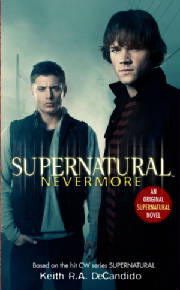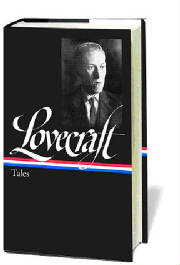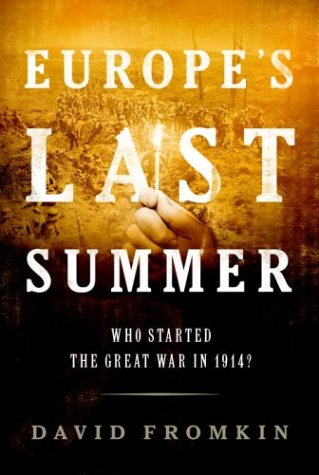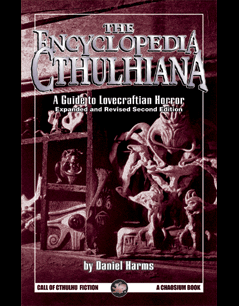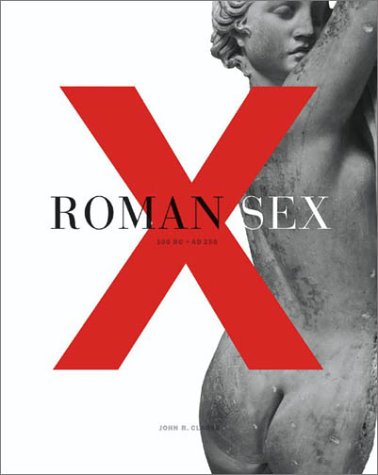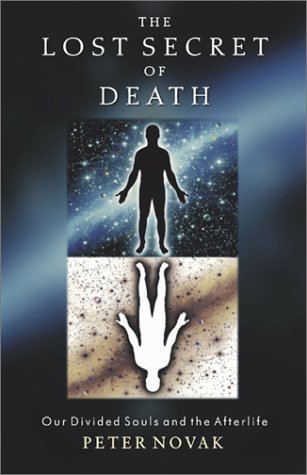|
Lost Civilizations Uncovered
|
|
Book Reviews
LATEST REVIEWS September 2007
To make up for the lack of reviews while I wrote
Knowing Fear, I bring you three new reviews. Supernatural:
Nevermore Keith R. A. DeCandido, 2007,
*
BUY IT *
BORROW IT * FORGET ABOUT IT * In general, I don’t care
much for television tie-ins, usually because a concept developed for television has a certain set of qualities adapted to
its medium and which rarely translate to the printed page as nicely as they manifest on screen. The obvious exceptions to
this admittedly loose rule are programs anthology programs that originated in the world of short stories, and shows whose
storylines are loose enough to provide elasticity for writers to exploit. That stipulated, the first novel tied in to the
CW television series Supernatural, Nevermore
by Keith R. A. DeCandido, ought to have been able to build off the show’s rather loose combination of stand-alone
episodes and continuing storylines to craft an entertaining enough tale to pass its three hundred pages. This book reaches
that bare minimum of enjoyment and stubbornly refuses to go even a hair’s breadth beyond. Briefly stated, the plot of Nevermore finds ghost-busting brothers Sam and Dean Winchester visiting the The title plot is a bit more
complex and involves ritual murders aimed at resurrecting Poe from his tomb for reasons that become evident only when it is
too late for their preposterousness to really matter. However, Mr. DeCandido makes a number of Poe-related gaffes that mar
this supernatural retelling of the story in Sheldon Rusch’s mediocre 2005 Poe-murder outing For Edgar (careful readers: note the coincidence of the stories chosen for the murders, and the identity of the
villain once revealed). First, Poe’s tale was “The Murders in the Rue Morgue,” not “on” the Rue Morgue as Mr. Candido claims a dozen times. Secondly, Mr. DeCandido has Poe scholars declaiming
any knowledge of the meaning of Poe’s poem “The Bells,” in which a couple marry and die in a fire, arguing
instead that there is no death in the poem and it just might have something to
do with fire. Perhaps Google or Wikipedia might have aided the research. Speaking of gaffes, a good editor
could have noted that agoraphobia has nothing to do with the fear of heights (acrophobia), and other minor errors that give
the book the feel of a draft rather than a polished copy. Then again, when you write several TV tie-in novels per year, every
book is likely quite close to its first draft condition. I shall finish with a thought
for those of you who actually read the book: Consider the ending, and tell me whether the writer missed an opportunity to
create something more, well, supernatural by failing to have the climactic encounter
with the villain coincide with the ritual night that was to have completed the plot driving the Poe story. One would think
that staging the encounter then would have led to a tidier, or even more haunting, ending than the otherwise clichéd scene. Of course, the bottom line for
a TV tie-in is how successfully it recreates the feeling the show it purports to capture. Here, Mr. DeCandido largely succeeded
(though again not without continuity errors and a few howlers). For the most part, the characters sound right, and within
reason the novel could have been an episode of Supernatural, though not necessarily
a good one. The
Immaculate Mark Mark Morris may have published
a dozen novels, and his The Immaculate may have garnered some good reviews, but
this may say more about the publishing industry and the taste of contemporary reviewers than it does the quality of the book
under consideration. The book’s cover cheerfully informs us that the Times
of The story, briefly told, involves
Jack Stone, an abused child who grows into a horror writer after leaving his alcoholic father, who blames him for his mother’s
death during his birth, and escaping his schoolyard bully, who like all bullies of literature exists with single-minded menace
to perpetrate acts of cartoon violence. Jack returns to his small hometown many years later to attend his father’s funeral,
reluctant to reengage the life he left behind and more reluctant to leave behind the girlfriend he came to love during a drawn
out description of a cheap Italian dinner. I cannot begin to describe the
bizarre machinations of the plot, which mostly concerns Jack feeling ambiguous about his love-hate relationship with his father.
Meanwhile, the former bully, Patty, has waited more than a decade to seek revenge on Jack for a time when Jack’s father
hit him. To accomplish this, Patty has trained his own daughter since childhood to become a Venus flytrap in order to sexually
entrap Jack in order to falsely claim rape in order to lure Jack to a doom fostered by an army of a hundred motorcycle punks.
This is the realistic part of the plot. The ridiculous part involves
the true identity of Jack’s girlfriend, which I must unfortunately leave to masochists to discover on their own. However,
if you do happen to enjoy self-flagellation and uncover the secret, ask yourself this: If your significant other turned out
to be who this one was, would you declare it a love beyond “conventional morality,” or would you take a cold shower
and go into therapy? The final twist makes “it was all a dream” look good by comparison. That said, the novel’s
writing is fairly crisp when not listing endlessly the characters’ favorite consumer goods, and much of the dialogue
is a step above the ordinary. Otherwise, The Immaculate is far from a perfect novel. Capsule Review Arkham
Tales 2006, Chaosium, 296 pp., ISBN:
1-5688-2185-6 * BUY IT * BORROW IT * FORGET ABOUT IT * Chaosium specializes in Lovecraftian
fiction for the role-playing set, and Arkham Tales is an anthology set not in Lovecraft’s
world but in the world of the role playing game based upon Lovecraft’s fiction city. Like all anthologies, there is
some good and some bad, but as a pleasant surprise the tales actually get better as one reads through the book. If you skip
the first third or so, this would be an excellent anthology, but as it is, it still ranks among Chaosium’s better efforts.
Writing in May of 1932, H. P.
Lovecraft disabused his friend and fellow horror-author Robert E. Howard of the notion that he might write the text for the
fictional Necronomicon, that dread book of dark legendry allegedly penned by the
Mad Arab, Abdul Alhazred, around AD 730: "I fear it would be quite a job in view of the very diverse passages and intimations
which I have in the course of time attributed to it! I might, though, issue an abridged Necronomicon--containing such
parts as are considered at least reasonably safe for the perusal of mankind!" Unfortunately for us, occult writer Donald Tyson
has done Lovecraft one better and fleshed out a "full" version of the madness-inducing tome. This wouldn't be so bad were
it not for the fact that Tyson claims his book is "uniquely accurate" and "faithful" to Lovecraft. Would that it were so! A work like Tyson's Necronomicon: The Wanderings of Alhazred operates on two levels: as a work of art and as an embodiment of Lovecraft's
vision. Therefore, we should evaluate the current "translation" on both levels before rendering a final judgment. First, let's
take the art: The Tyson text is a reasonably
artistic recreation of eighth century writing, with the typically florid prose and mind-numbing boredom frequently found in
compositions of the era. Each of the very short chapters covers an episode in the wanderings of Alhazred as he pieces together
the lore of the Old Ones. This is all very detailed and carefully worked out, though sometimes contradictory. Tyson embeds
paraphrases of Lovecraft's famous Necronomicon passages within his text, though
not always seamlessly. In one place he has Alhazred ask (from "The Dunwich Horror") what man knows Kadath, but in another
chapter actually goes there and experiences it! If only poor Randolph Carter knew
how easy it was to get to Kadath, he would never have needed that darn Dream-Quest! In another place, he embeds Lovecraft's
"cryptic couplet" ("That is not dead…") as a quotation, apparently following Robert M. Price's humorous "Critical Commentary
on the Necronomicon" and its suggestion that the couplet is cult liturgy repeated
by Alhazred instead of Lovecraft's own assertion that the couplet is part of an Alhazred poem. While logical, this development
isn't "uniquely faithful" to Lovecraft. On a more subtle note, the verisimilitude
of the work is broken by the insertion of Tyson's name as the author of the volume (a better approach would be to list him
as "translator"), but despite intricate working of the Greek and Latin translation chronology, there is no "author's note"
giving a fictional explanation for how the tome came into the English language! For shame! Such a detail would have enhanced
the book and provided a suitably ominous air of pseudo-scholarship not unlike Lovecraft's intentions. But to get back to the professed
faithfulness to Lovecraft: that is another question altogether. Here is where I have the biggest problem with Tyson's version.
In Lovecraft, the Necronomicon is not an explicit guide to the Old Ones and their
ethnography, but instead contains "terrible hints" which only the most adept and learned in cult lore can completely understand.
In Tyson's version, everything is made explicit. Compare Lovecraft's description of the dread tome's references to Cthulhu
and his cult: "No book had ever really hinted of it, though the deathless Chinamen said that there were double meanings in
the Necronomicon of the mad Arab Abdul Alhazred which the initiated might read
as they chose." And now Tyson: Great
Cthulhu is ever a warrior god, and of all the Old Ones he is the most terrible… It was he who together with his star
spawn that defeated the Elder Things… He uses its [his mind's] power to send forth to men who are susceptible to his
influence the command that they release the seals that bind his tomb… The color of his skin is green mingled with gray…
There follows a description of
how and when Cthulhu will rise from his watery tomb. And that's just the chapter titled "Cthulhu." Other chapters spell out
the exact role of each of the other major Lovecraftian gods (weirdly promoting Dagon to a top role) and their supposed relationships
to one another. I'm pretty sure this is a bit more direct than what Lovecraft called the "fiendish elder myths which…the
Necronomicon affrightedly hint[s] about." Finally, the most important flaw
in Tyson's Necronomicon is this: It lacks the sense of cosmic dread that animates
the best of Lovecraft's horror. In this work, there is never a sense of horror or the terrifying otherness of the Old Ones,
only a bestiary of vaguely powerful beings conforming roughly to the frequently mentioned Hebraic and Christian mythologies.
Come to think of it, that's an awfully odd set of references for the mad Arab, since as a lapsed Muslim he should be writing
in an Islamic frame of reference rather than a Judeo-Christian one. But then, the Old Ones never were too picky about those
pesky humans and their affairs, so why should we be? SPECIAL SECTION: IMAGINING THE
NEOLITHIC February 2006
This month I review two books offering different takes on the Neolithic
period, the time between the Old Stone Age (Paleolithic) and the Bronze Age. It was a time of rapid cultural change and saw
the introduction of agriculture and new forms of religion and architecture. In many ways the Neolithic was the most formative
phase of human development. Inside the Neolithic
Mind: Consciousness, Cosmos, and the Realm of the Gods David Lewis-Williams and David
Pearce, 2005, * BUY IT * BORROW IT * FORGET ABOUT IT
* Soberly assessing the New Stone
Age from the perspective of our current understanding of the human mind and its generalities, David Lewis-Williams and David
Pearce analyze how our neurological makeup influenced and guided the remarkable explosion of culture that occurred during
the Neolithic period. In this too-brief but fascinating study, the authors explore the possibility that Neolithic monuments
like Newgrange in Ireland and Catalhoyuk in Turkey represent the physical manifestations of religious beliefs derived from
universal human mental experiences. For this, they rely on the similarity between the iconography and architecture of these
sites and the reports of people in altered states of consciousness ranging from religious ecstasy to drug use to daydreaming.
To avoid accusations that they
reduce all culture to random biological derivatives, the authors clearly indicate the role cultures play in emphasizing, directing,
and interpreting altered states of consciousness in their own unique ways. The same symbol may represent different things
to different human groups, and in this way culture interacts with biology to invent culture. This process therefore accounts
for nearly universal human beliefs in a tiered cosmos, in spirit beings, and so on, despite extreme regional and culture variation
on these themes. Unfortunately, despite the genuinely
interesting theories presented in Inside the Neolithic Mind, the authors restrict
themselves to just two areas, the ancient Near East and the Atlantic seaboard. Further comparisons with additional areas would
have strengthened their claims. It also remains to be seen whether the arguments the book derives from Steven Pinker's The Blank Slate, which held that biology defines more of human behavior than previously
realized, will hold up over time. However, Inside the Neolithic Mind does a superb
job of explaining the intersecting worlds of biology and culture, offering a unique insight into the development of human
culture that will surely be talked about for years to come, even if you do not necessarily agree with the authors' contention
that all non-material experiences are necessarily products of random brain function. For those with an interest in
"alternative" views of civilization, Inside the Neolithic Mind offers an intriguing
way of viewing human culture. The similarities alternative authors tend to see in ancient civilizations may very well be the
result of differing cultures interpreting and utilizing universal mental experiences in their own unique ways--no aliens or
Altanteans needed. Civilization One: The
World is not As You Thought it Was Christopher Knight and Alan Butler,
2004, Originally published in Skeptic 11.3 (Winter 2005), pp. 94-5. Civilization One reads like the notes for a much better book that could have been written by authors less awestruck
by their own cleverness. Superficial and often unreadable because of a dense number of mathematical equations, the book commits
the lust sin of popular literature: it is no fun to read. Crammed into just over 250 pages are so many unbelievable assertions
and unproven speculations that it would take a book-sized rebuttal to do adequate justice to this triumph of numerology over
science. The book's thesis is built upon
the supposed revealing dimensions of the Megalithic Yard--a hypothetical unit of measurement 82.96656 cm long (about 10 palm
widths), originally identified by engineer Archie Thorn as the unit used to build the great Neolithic structures of Ireland
and Britain such as Newgrange and Stonehenge. The precision claimed for the length of the Megalithic Yard is surprising given
the poor condition of Neolithic monuments today. It is impossible to record their measurements to the ten-thousandth of a
millimeter, the standard apparently used to derive this unit of measurement. The claims of Civilization One depend on the authors' insistence that the Megalithic Yard is derived from an ancient civilization's
knowledge of the precise dimensions of the Solar system. Knight and Knight and Building on their "findings,"
the authors correlate MYs with other historic units of measurement, demonstrating that cubes made from sides with fractional
MYs produce known units of weight and volume, including pints and pounds. They then go on to make some outlandish claims based
upon the recurrence of numbers like six and ten when cosmic values like the mass of the earth are converted into ancient measures.
Even the authors admit that these arguments are unconvincing, but they believe they should be taken as part of a "holistic"
approach to science and math. If it feels good, believe it. Nevertheless, let us assume for
a moment that all of these measurements are completely correct and genuinely ancient. What would they prove? They would only
prove that people with the same geometric knowledge as the ancient Greeks invented some units of measurement that caught on
in some parts of the ancient world. This is a far cry from Knight's and But this is to be expected from
authors who have clearly performed such limited research. They display no awareness that knowledge is a process of accretion,
as they wonder why early people, with the same brains as today's humans, did not invent higher math. They seem not to remember
that one must lust have giants before one can stand on their shoulders. Worse, their acceptance of so-called "facts" shows
no evidence of any critical thinking. At one point the authors outrageously claim that 730 million Egyptians were mummified,
misunderstanding the website they lightly paraphrase, whose own material was lifted verbatim from Microsoft's Encarta encyclopedia.
The Encarta claimed 730 million bodies--cats, humans, ibises, etc.--were mummified, a number that is still high by other estimates.
Such poor research makes it hard to trust their unreferenced information, and their over-reliance on the deus ex machina of a lost civilization destroys the few genuinely interesting arguments they present in the book.
Since so much of Civilization One depends on the numerological magic of 366, the book lives and dies on the validity of the Megalithic
Yard and the 366 degree circle. This reality is never conclusively shown, but by simply repeating their assertions Knight
and Butler want us to believe that it has been, cleverly promising still more information in a forthcoming book. The authors
never really explain where those extra six hypothetical degrees went to leave us with a 360 degree circle, but perhaps they
don't have to. It seems clear from their work that the missing six degrees are the six degrees of separation which link every
actor to Kevin Bacon and every numerological coincidence to a lost civilization. Michel Houellebecq (Translated by Dorna
Khazeni) Believer Books / McSweeney’s |
ISBN 1932416188 | May 2005 | 150 pages | $18 Since I am unfamiliar with French novelist
Michel Houellebecq's other works, I approached his 1991 essay "H. P. Lovecraft: Against the World, Against Life" on its own
merits. Available for the first time in English, the slender paperback is fleshed out with an illuminating introductory essay
by Stephen King and pointless reprints of Lovecraft's "The Call of Cthulhu" and "The Whisperer in Darkness." Or at least that's
what the press materials say. The publisher provided advanced copies of only King's and Houellebecq's contributions to the
composite volume, so the final product may not be as described. Houellebecq, described as the "bad boy
of French literature," turns in an 80 page essay (in large type) that arbitrarily combines a loose biography of horror master
Lovecraft with speculation and opinions about the current state of literature and abstract philosophy. Houellebecq contends
that Lovecraft's life represents a great example of how to fail in life and succeed in work, drawing on Lovecraft's biography
to make points about the value of art in human existence. For the author, Lovecraft represents the perfect acme of the poetic
genius: an active hostility to life. If I am reading "Against the World" correctly, Houellebecq believes that the highest
form of human endeavor is to stridently oppose the status quo since it is inherently unfair and worthless. Life itself, he
says, is evil, so it is humanity's duty to oppose it and, Christ-like, turn one's life into a "living sacrifice." The chapters of "Against the World" are
only roughly connected; the whole of the essay (hence the quotation marks--it isn't quite a book) is less than coherent. Perhaps
it reads better in French. Houellebecq quotes liberally from what seem to be the French translations of Lovecraft, and he
proceeds to analyze Lovecraft's language and its import through the lens of these translations. The translator, Dorna Khazeni,
has reinserted Lovecraft's original words, giving us the spectacle of reading an English translation of French commentaries
on French translations of English-language stories. Somehow, the ideas don't quite survive the numerous permutations, and
the result is a bit baffling. Stephen King's introduction, however, is preserved in its native language and makes for more
satisfying reading. Perhaps the best explanation of just
what "Against the World" is comes from its "product description": "Houellebecq's insights into
the craft of writing illuminate both Lovecraft and Houellebecq's own work." In other words, this is less a book about Lovecraft
than one about Houellebecq, in which the French author reflects himself in the mirror of Lovecraft.
A CLOSER LOOK January 2005
Tales H. P. Lovecraft (edited by Peter
Straub) Library of 864 pages | $35.00 * BUY IT * BORROW
IT * FORGET ABOUT IT * There is no surer mark that an author
has entered the American literary canon than for his or her works to find their way into the Library of America. These uniform
editions bring together the works of American masters and present authoritative texts for the scholar, critic, and student.
After years of dwelling on the fringes of respectability, H. P. Lovecraft has finally crossed over into the American canon
with the Library's publication of a thick volume of his fiction under the imaginative title Tales. Editor and novelist
Peter Straub, best known for his collaborations with Stephen King, has entombed within the unadorned, black covers of the
brick-sized tome 22 of Lovecraft’s 60-odd short stories and novellas. Included are several of Lovecraft's most
important and best-known horror and science-fiction tales, like "The Call of Cthulhu," "The Colour Out of Space," and "At
the Mountains of Madness." However Straub has made some eccentric choices, including substandard Lovecraft like "Herbert West--Reanimator"
and the inexplicably boring "He" while largely excluding Lovecraft's fantasy stories set in the distant past or the world
of dream. Thus less horror-centric stories like "The Silver Key" and The Dream-Quest of Unknown Kadath are absent.
The collection gives a colder and less complete overview of Lovecraft's range than earlier anthologies, like Del Rey's 1982
collection, The Best of H. P. Lovecraft: Bloodcurdling Tales of Horror and the Macabre. In a terse note at the back of the book,
Straub reveals that the Library of America's texts are taken entirely from Lovecraft scholar S. T. Joshi's authoritative editions,
and the story selection reliably follows Joshi’s distaste for Lovecraft's more fantastic stories. Also from Joshi is
the entirety of the notes to the text, mostly definitions of obsolete words, explanations of Lovecraft’s allusions,
and references to his letters. These are largely abridged from Joshi's Arkham House editions, and dollar for dollar those
books are probably a better value than the Library's redundant reprints. Nevertheless, the true worth of the Library
of America edition of Lovecraft's Tales is its canonization of Lovecraft as a Great Author. Ever since Edmund Wilson
eviscerated Lovecraft's fiction in a 1942 essay, Lovecraft's fans and admirers have tried to have him petrified into the pantheon
of American writers. It was this struggle--the sense that reading Lovecraft was in some way not quite approved by the teachers,
professors, and experts--that induced generations of youth to delve down to R'lyeh in search of Cthulhu and his kin. Now safely
tucked away on the shelves of the American canon, Lovecraft's controversial cosmic vision can be safely disposed of as a harmless
"classic," one of those wholesome books we force unwilling children to read. Mark Twain knew it well enough when he said that
a classic was "a book people praise and don’t read." THE BOTTOM LINE: The
Library of America's Tales is an important milestone for Lovecraft scholars and for Lovecraft's place in the literary world.
However, the publication of Tales may mark the point where saying you're "reading Lovecraft" conjures about as much excitement
and curiosity as "reading Jane Austen" or "reading Nathaniel Hawthorne." For the sake of future generations of Outsiders,
let us hope that never quite happens.
CAPSULE REVIEWS The Rise and Fall
of Rubicon: The Last Years of the
Tom Holland Doubleday | ISBN 0-385-50313-X | 2003
| 408 pages | $27.50
A masterpiece of style, Rubicon beautifully captures the facts and feelings in the years when the The Closing of the Western Mind: The Rise of Faith and the Fall
of Reason Charles Freeman Knopf | ISBN 1-4000-4085-X | 2003 | 432
pages | $30.00 On the other end of Roman history, Charles
Freeman's Closing of the Western Mind describes the fracturing of the Empire in
the years following its adoption of Christianity as its state religion. Freeman would like very much for us to believe that
Closing chronicles Christianity's brutal oppression of the Greek rational tradition
and shows the way unblinking faith replaced open minded inquiry under the aegis of power-mad prelates and emperors, corrupting
them and their doctrines in the process. Closing's most useful passages demonstrate
how accepted Christian doctrine was a result of political expediency. All of this is very likely true, but Freeman's Closing is a rather dry chronicle of the rise of Christianity to its medieval predominance. Largely free of analysis
and only loosely connected to the stated theme, most of Freeman's book simply regurgitates names, dates, and lengthy descriptions
of various philosophers' and theologians' ideas without demonstrating exactly how they caused the death of reason. RATING:
FORGET ABOUT IT
A CLOSER LOOK July 2004
The Rape of the Masters: How Political Correctness Sabotages
Art Roger Kimball Enounter | ISBN: 1-893554-86-4 | July
2004 | 186 pages | $25.95 Rating: * BUY IT *
BORROW IT * FORGET ABOUT IT * Is it possible to agree with a book almost
completely and yet still think that the book is almost worthless as a piece of literature? According to the writers whose
work is skewered in Roger Kimball's The Rape of the Masters, the answer is a definite
"no" because art and literature are only politics, and the only good art or literature is that with whose politics you agree.
According to Kimball, the answer is "yes," because the work must be seen as a whole, free of ideology. Therefore, in keeping
with the spirit of the author, this review will proudly proclaim that Kimball's ideas are quite correct, and his book is quite
bad. Kimball, a distinguished art critic and
editor of the New Criterion, believes that academia has destroyed humanity's collective
sense of its artistic heritage by over-analyzing artwork and reading into classic pictures politically correct interpretations
that support the academics' liberal political and social ideologies. Kimball marshals some good examples of this process,
including a hilarious chapter eviscerating David M. Lubin's outrageous interpretation of a John Singer Sargent painting. Lubin
apparently believes that a capital E is a phallic symbol ready to rape the lowercase ("feminine") letter next to it and that
a "i" with a circumflex over it represents an impregnated and circumcised female. Thus paintings whose titles can be translated
into French with those letters clearly are all about kinky, incestuous sexual domination. If that makes no sense, you have
not been exposed to modern academic psycho-sexual interpretation. For all the self-evident correctness
of Kimball's deconstruction of outrageous claims like the one above, The Rape of the
Masters never really comes together as a book. Separate chapters present an individual painting by a master artist and
one critic’s outlandish interpretation, followed by Kimball's exasperated and snide comments. The book feels slap-dash
and has no overall structure. It has no sound methodology to demonstrate just how wide-spread idiotic interpretations really
are. Part of the problem derives from Kimball's own belief that "theory" is bad and has no place in the art world; therefore,
it has no place in his book, and the lack of a strong intellectual backdrop for his ideas is a problem. How can the reader
know what the general consensus is about the works of art except through Kimball's own assertions? Worse: if Kimball's interpretations
found their way to print, logically the book's thesis that only psycho-sexual interpretations are available for students to
learn from cannot possibly be true. The book also has some other odd quirks,
Kimball's insistence on using the book's title in the book itself: "It pleases me to think that The Rape of the Masters will help counteract that anesthesia, prompting more people to object to the objectionable."
Ultimately, Rape feels much more like an extended review of a longer, weightier,
better book that Kimball did not have the patience to write. Even if you agree completely that modern academia is obsessed
with race, class, and gender and reads post-modern messages into everything, Rape
will do little to enlighten you further and nothing to help redirect art criticism to a new, more grounded level. Ultimately
the lesson both the academics Kimball criticizes and Kimball himself need to learn is that criticism tells you much more about
the critic than the work being criticized.* THE BOTTOM LINE: Individually
the book's eight brief essays are often quite entertaining, especially the aforementioned essay on Prof. Lubin and Sargent.
For no other reason than the humor of that one essay, The Rape of the Masters is
worth checking out, as long as you don't expect too much other than a good laugh. * Yes, I am aware of the
irony of saying that in a critical review.
A CLOSER LOOK May 2004
David Fromkin Knopf | ISBN: 0-375-41156-9 |
March 2004 | 349 pages | $26.95 * BUY IT *
BORROW IT * FORGET ABOUT IT * If you will forgive the pun, I
knew I was in for a rocky ride when David Fromkin's new book on the First World War began with a description of some strange
turbulence on a routine flight that briefly made news in 1997. This forgettable minor incident cannot compete with the lofty
importance of Fromkin's subject matter, and its use as a bookend here raised some questions since the author holds that it
is the only metaphor he can think of to explain the chain reaction that destroyed Western civilization in August 1914. In Europe's Last Summer,
Fromkin lays out his case for why the Great War began when and where it did. Placing blame on the leadership of Germany and
Austria-Hungary (the "Central Powers"), the author demonstrates that World War I was the result of None of this is particularly new,
but Fromkin's aim was not to revolutionize the field but to bring to popular attention the recent research of the past twenty
years. Perhaps thinking of his audience, he limits most chapters to fewer than four pages; many are only a few paragraphs.
This leaves little room to develop either characterizations or themes. Instead, a vast array of names go by--Moltke, Berchtold,
Grey, Pointcare--with little insight into who they were or how they thought. The most attention went to Kaiser Wilhelm and
the slain Archduke, a consequence of Fromkin's reading. His admiration for Frederic Morton's Thunder at Twilight is
evident in the amount of detail he borrows from it virtually undigested. On more than one occasion it was easy to tell which
book Fromkin read as he wrote a particular chapter. Europe's Last Summer
is divided into several sections, many of which seem to belong to different books. The first few sections take a long view
of the run-up to war, exploring long-term causes. The middle section provides a day-by-day, but not too detailed, account
of the July Crisis, and the last section returns to the big-picture view to analyze the events again. The book would have
been improved by melding together the different sections to tell the story of the July Crisis in a deeper, more fluid narrative
that gave background and analyzed actions all at once, rather than in parts. But that book has already been written: William
Jannen's 1997 The Lions of July, which Fromkin cites as a source. Fromkin's previous book, the superb
A Peace to End All Peace, told the story of how the years following the Great War created to modern Middle East, but
in attempting to work backward to the root causes of the great 1914 conflagration, Fromkin traded the literate, eloquent style
of the earlier book for an uneasy hybrid of the journalistic and the academic. For the general reader it is wholly unnecessary
to discuss which historians found which papers and analyzed them how. Instead, tell us what happened and why. It was hard
to imagine that the same man wrote both Peace and Europe's Last Summer. THE BOTTOM LINE: Europe's Last Summer is occasionally insightful, but its odd structure
and brief chapters provide little room to develop the deep, complex thoughts necessary to understand one of the most complex
wars the world has ever seen.
QUICK TAKE March 2004
The Encyclopedia Cthulhiana By Daniel Harms Chaosium | ISBN: 1-56882-119-0
| 2003 | 425 pages | $17.95 Rating: * BUY IT
* BORROW IT * FORGET ABOUT IT * Daniel Harms' massive Encyclopedia
Cthulhiana aims to be the most useful guide to H.P. Lovecraft's Cthulhu Mythos since Lin Carter first collected some of
the same information in 1956. A lot has changed since then, and the first edition of Encyclopedia broke new ground
in cataloguing the people, places, and things that make up the Lovecraftian universe, as told by H.P. Lovecraft and those
that followed him. In 1998, the second edition expanded on the first and became a must-read for anyone who wanted to get a
handle on the exploding array of gods, monsters, and tomes used in Mythos stories. Unfortunately, the "new" release of the
Encyclopedia is only a reprint of the 1998 edition, though with a few corrections and revisions. Harms catalogues each Mythos
entity with a Britannica-style entry by name, defining the entity and providing a brief list of references to its major appearances
in fiction and Call of Cthulhu role-playing game material. He perhaps overdoes the gaming side a bit, and for readers who
are Lovecraft fans but not game players this might seem excessive and confusing, introducing an array of terms and ideas not
found in Lovecraft or his literary successors. Otherwise, the Encyclopedia is a useful reference for all things Cthulhu
and makes a handy guide for understanding obscure references in Mythos stories. However, if you already have the first edition,
you may want to borrow the second edition first to see if the new(er) content is worth your money. If you have the second
edition, this printing is the same thing. If you have neither, borrow one from a friend to find out trivia such as what Mnomquah
is or how the Fishers from Outside differ from the Old Ones. THE BOTTOM LINE: The Encyclopedia Cthulhiana is epistemological fun for Lovecraft die-hards, but for the
casual reader (and writer), systematizing the Lovecraftian universe limits the intrigue to be had from mystery and uncertainty.
The White People Arthur Machen Chaosium | ISBN: 1-56882-172-7
| May 2003 | 284 pages | $14.95 *** (out of four) Shadows Over Michael Reaves and John Pelan
(eds.) Ballantine/Del Rey | ISBN: 0-345-45528-2
| October 2003 | 446 pages | $23.95 ** (out of four) At the time that Sir Arthur Conan
Doyle began writing his most famous tales, those of the ultra-rational detective Sherlock Holmes, Arthur Machen, an inspiration
for H.P. Lovecraft, was creating tales of cosmic horror that at first glance seemed entirely opposite to Doyle's ordered universe.
But Doyle himself was an ardent believer in the supernatural, so it is not entirely surprising to see a new collection of
stories bring Sherlock Holmes into the world of H.P. Lovecraft not long after a new edition of Machen's stories hit bookstores.
However, comparing the two books reminds us of the startling difference between Victorian literature and literature about
Victorians. On the Victorian end, The White People collects around twenty of Machen's tales of the supernatural, including the title story, dealing
with unspoken sexual themes, and the short novel A Fragment of Life, about the
slow realization of a A sequel to Joshi's earlier collection
of Machen's stories, The Three Impostors, reviewed here in 2001, The White People shares the previous book's virtues. It makes accessible
some truly great late Victorian writing of a style and quality likewise unseen since that age. However, it also shares the
earlier book's flaw: Joshi's introduction gives too much away. For those who have not yet read these tales, it is best to
save the introduction until after reading the stories. Also present is the bizarre floating potato on the book's cover, a
mirror image of the same strange creature on volume one. This charming collection hints at the subtle horror underlying the
calm surface of Victorian and post-Victorian life. In contrast to Machen, the
new collection Shadows Over Baker Street offers characteristically blunt twenty-first
century imaginings of how Sherlock Holmes might have dealt with the minions of H.P. Lovecraft's Old Ones. The eighteen stories,
each by a different modern author, offer eighteen different takes on the same premise: the gaslight detection of Holmes and
Watson meets the transmundane terror of the Old Ones. At their best, these tales are genuinely terrifying and giddy fun. At
their worst, they cram the worst excesses of Lovecraft imitators into pale pastiches of Doyle's style. Shadows is reminiscent of Victorian "supernatural detectives" like William Hope Hodgson's Carnacki and Algernon
Blackwood's John Silence. Overall, however, the collection is fun to read, but it is best if you are among that subset who
is intimately familiar with all of both Doyle's and Lovecraft's tales and their later imitators, too. Hands down, the best of the stories
is F. Gwynplaine McIntyre's "The Adventure of Exham Priory," which manages to combine Lovecraft's "Rats in the Walls" with
Holmes' depression after his return from the "dead" and turn it into a truly amazing synthesis. McIntyre's story perfectly
captures the tone and style of Doyle's stories and transports Holmes into a frightening world where cosmic horror wreaks a
toll on the great detective's faith in reason itself. This story alone is almost worth the book's hefty cover price. Other
strong entries include James Lowder's "The Weeping Masks" about Watson's terrible time in However, Shadows has a serious flaw that detracts from the book. In nearly all of the stories (except, notably, McIntyre's
entry), Sherlock Holmes is already familiar with Lovecraft's Old Ones and knows all their secrets and how to vanquish them!
He is intimately aware of the cycles of the stars and knows when the extraterrestrial beings can plunge from world to world.
This is a striking contrast to the man who once told Watson he did not know the earth went around the sun because that information
wasted valuable brainpower he could use for deduction. That such a man would already know the esoteric secrets of Cthulhu
seems off. Also, the tales have very little deducing and a much action-hero theatrics at the expense of anything truly Lovecraftian.
One could imagine a better book where Holmes had to grapple with startling challenges to his rationalist world-view in the
face evidence leading toward conclusions of cosmic terror. Instead, we are too often given
stories like Sandman author Neil Gaiman's "A Study in Emerald." That story postulates
an alternative universe where the Old Ones live as human royalty, but the story presumes knowledge of post-Lovecraft authors
of Lovecraftian horror and an ability to forgive dozens of historical errors (like having Victoria's consort Albert alive
twenty years after his 1861 death). I'm sure Gaiman has an explanation for each anachronism, but a story has not succeeded
if it needs explanation. Besides, the story, billed with the others as "tales of terror" on the cover, produces more giggles
than chills. How scary can the Old Ones be when, as in "Emerald" people are putting on plays and puppet shows about them?
Harry N. Abrams | ISBN: 0-8109-4263-1
| 2003 | 168 pages | $35.00 ****(out of four) (contains graphic sexual
images) Reviewed November 2003 The Romans are often mythologized
as noble statesmen and master soldiers. For the better part of two millennia Roman government and Roman military prowess has
served as the benchmark against which the West measures itself. However, sex in ancient John Clarke's Roman Sex
takes a fresh look at the role of sexuality in Roman life and finds surprising evidence that the Romans had a much different
attitude about sex than modern Americans, one that has not been understood: "Perhaps the greatest barrier to our seeing ancient
sexuality clearly is one that we ourselves erected only a century and a half ago. It is the creation of 'pornography.'" By
classifying sexually explicit images to the category of pornography, it meant that Western archaeologists downplayed or sometimes
destroyed explicit paintings and sculptures from the Clarke discusses all the
complex facets of Roman sexuality, which we today might call hetero-, homo-, and bisexuality, though the Romans had none of
these distinctions and saw sex only as the pursuit of beautiful partners, whatever gender they may be. He also discusses Roman
attitudes toward different sexual positions and differing numbers of partners. It seems the Romans had basically one rule
for sex: an elite Roman man may have sex with anyone of inferior social status but must always be the partner who penetrates
the other(s). Aside from this, Clarke presents Roman sex as a lusty free-for-all in the quest for the ultimate satisfaction
and bliss, good sex with the most beautiful women and men and Roman man could find. The Romans also considered sex between
adult men and adolescent boys to be proper and desirable, a custom imported from the Greeks. Roman Sex is lavishly illustrated with rare scenes from Roman painting and sculpture. The
photographs present stunning evidence that the picture of the ancient world presented in textbooks and on television is a
sterile, sanitized version, not unlike Bowdler's "expurgated" Shakespeare. While the pictures are explicit, they demonstrate
a joie de vivre that reaches out across the centuries and humanizes and puts life back into the cold marble statues
of the "noble Romans." It seems that the old Romans had a lot better time than the girls of Sex in the City.
Peter Novak Hampton Roads | ISBN: 1-57174-324-3
| October 2003 | 332 pages | $15.95 * (out of four) Reviewed November 2003 Twenty-five hundred years ago,
the Greek philosopher Plato proposed that the human mind was composed of three distinct parts that needed to act in harmony
to produce a healthy life. These were roughly equivalent to the three parts of the mind that Sigmund Freud discovered one
hundred years ago: ego, id, and superego. Happy to dispense with this tripartite division, former psychological counselor
Peter Novak claims in The Lost Secret of Death that the human mind is not three parts but two, and these two parts
are halves of our souls that are separate but equal in the living body. Only by ensuring that these two parts are united at
death can we hope to achieve the type of immortality promised in the world's great faiths. Novak's thesis would be interesting,
if only his conclusions followed from his facts, or if his facts were true. Novak, who says he has devoted fifteen years to
researching life after death following his wife's suicide, delves into every New Age tome he can find in an attempt to synthesize
their contradictory accounts of the afterlife into one system. He does not consider scientific research or anyone whose ideas
might contradict his own. Building on dubious reports of out-of-body and near-death experiences, he proposes that the two
halves of the mind, the conscious and unconscious, split after death and that the conscious mind goes into a black abyss of
reason while the unconscious goes into a tunnel of light and emotion. Uncritical of his less than definitive source material,
Novak never considers the simplest explanation for his "discoveries," namely that instead of representing transference to
an afterlife realm, these experiences instead reflect brain phenomena during the process of death, when sensory input ceases. Nevertheless, Novak claims his
Doctrine can explain all the different views of the afterlife, from reincarnation to heaven and hell in one system. He calls
that system the Binary Soul Doctrine, and he claims that it was the religion of Atlantis. He bases this on the authority of
Graham Hancock, the alternative historian whose claims for a lost civilization have been refuted by traditional science. His description
of the Toltec belief system is based solely on a New Age shaman who claims he can channel the Toltec, who have been dead for
600 years and left no records. Novak tries to back up his claims
by distorting myths, legends, and science to fit his preconceived notion of humanity as pairs of binary opposites. Light and
dark, heaven and hell, Pepsi and Coke (yes, he really says that), Novak sees the world as binary pairs. However, binary opposites
are not a human universal but a unique social construct of the Western mind. Darkness is the mere absence of light; heaven
and hell once had purgatory between them, and there are innumerable other sodas competing with Pepsi and Coke, which aren't
opposites at all. Freud, Novak claims, saw the mind as ego and id. Conveniently, he leaves out the superego. From flawed premises, Novak draws
illogical conclusions. His "discovery" of a divided soul is nothing more than a religious mind trying hard to fit a Freudian
framework into a supernatural guise. Since Novak is a Christian, it should surprise no one that he concludes that the path
to reuniting the two halves of our souls is through Christ, and he announces that his doctrine demonstrates that Christ has
taken over the unconscious minds of every human, making even the infidels followers of Christ. His final thought is equally disturbing:
"The BSD [Binary Soul Doctrine] can only be true if Jesus' accomplishment is as well (emphasis in original)." For a
book that claims to discuss souls and the afterlife, his new science of the afterlife is nothing more than that age-old hope
of Christians world-wide, a proof of the existence and resurrection of Jesus. Unfortunately, Lost Secret of Death is
not that proof, or proof of anything other than the author's (and humanity's) need to try to find an explanation for the unfathomable.
Jean-François Revel Encounter Books | ISBN 1-893554-85-6
| October 2003 | 176 pages | $25.95 ** (out of four) In Revel's thesis is simple: Revel's slender volume purports
to explore these issues, but it merely uses them as coloring for what is essentially a text berating Europe in general and
France in particular for policies with which Revel disagrees. The United States is not so much the subject of Revel's book
as the great alternative that he can employ as an example of another way of doing things in France. It is tempting to argue
with him over some of his more outrageous assertions. For example, he argues that globalization increases diversity
and battles standardization because citizens of any city on earth can have access to Italian, Chinese, Tex-Mex, or Thai foods.
While this is diversity as far as an individual is concerned, he fails to note that this globalization standardizes
not just the foods themselves but also the choices that an individual encounters in While Revel can destroy straw
man arguments with great wit, he never gives credit to those with opinions opposing his own, nor does he examine his opponents'
arguments with any depth. For him the equation is simple:
|
|
© 2003-2007 Jason Colavito. All rights reserved.
|
